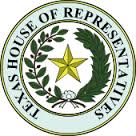 Applauds Texas House for Taking Lead on Historic School Finance Legislation
Applauds Texas House for Taking Lead on Historic School Finance Legislation
AUSTIN, Texas — Today Texas House Speaker Dennis Bonnen joined Members of the Texas House of Representatives at a news conference in support of House Bill 3, a bill filed by Public Education Chairman Dan Huberty that fundamentally transforms the state’s public school finance system. House Bill 3 — also referred to as the “Texas Plan” — invests $9 billion toward advancing student achievement, supporting Texas teachers, providing property tax reform, and allocating more dollars to Texas classrooms than ever before. House Bill 3 is particularly monumental in that it embodies the first major rewrite of the state’s public school finance system undertaken without threat of a court order.
“I am so proud of the Texas House for taking us one step closer to passing transformational school finance legislation because Texas children can no longer wait for action — the time is now,” said Speaker Bonnen. “Chairman Huberty, the Public Education Committee, and the Members of the Texas House have worked tirelessly to compose this thoughtful legislation that is built upon years of research, data and testimony. I applaud their commitment to Texas students and teachers, and know that the unprecedented investments we’re making in classrooms will elevate Texas’ education system to be the envy of the world.
School finance legislation has long been the top priority for Speaker Bonnen and the Texas House of Representatives this legislative session and an emergency item for Governor Greg Abbott.
Built upon years of research, data and testimony, House Bill 3:
- Invests in Texas students and teachers by adding approximately $9 billion in funding above enrollment growth and current law entitlement over the next two years;
- Empowers local school districts to put more money in their classrooms by raising the Basic Allotment from $5,140 to $6,030, an $890 increase per student;
- Provides property tax reform by lowering school property tax rates by 4 cents statewide;
- Reduces recapture from $7.7 billion to $4.7 billion for the biennium, a $3 billion or 38% reduction;
- Establishes an early reading program that funds full-day, high quality Pre-K for low-income students, setting the right foundation for students to be able to read at grade level by third grade;
- Substantially raises the minimum teacher salary schedule and allocates an addition $140 million in funding for a teacher quality program, providing districts with the resources for recruiting and retaining teachers in the classroom;
- Enhances the yield on the “enrichment” pennies, allowing schools to earn and keep more money for property taxes levied above the standard Tier 1 tax rate;
- Creates a professional development grant program to train teachers in blended learning instruction so they can effectively combine e-learning and traditional classroom instruction;
- Dedicates more money for dual language immersion education, which has proven to be more effective in producing greater achievement levels for multilingual and native English speaking students;
- Equips districts with the resources needed to identify and intervene at the earliest signs of student dyslexia and related disorders;
- Establishes an extended year program that allows districts to combat “summer slide” by providing 30 days of half-day instruction for students in grades PreK-5 during the summer months;
- Updates the transportation funding model from a burdensome linear density model to a simplified one dollar per mile reimbursement;
- Allocates resources to low-income students on a sliding scale (rather than an equal weight) to prioritize students with the highest needs, and provides more funding to schools with higher concentrations of economically disadvantaged students and generational poverty;
- Quadruples the amount allocated to fast growth districts to build and equip new instructional facilities funding to $100 million per year;
- Expands career and technology education programs for students in grades 6-12 (previously grades 9-12), making students more skilled and better prepared for the workforce or post-secondary education; and
- Establishes a grant program for districts to offer parents of economically disadvantaged students with learning disabilities in grades 3-8 access to additional services to help improve educational performance.
To learn more, visit www.thetexasplan.com.

